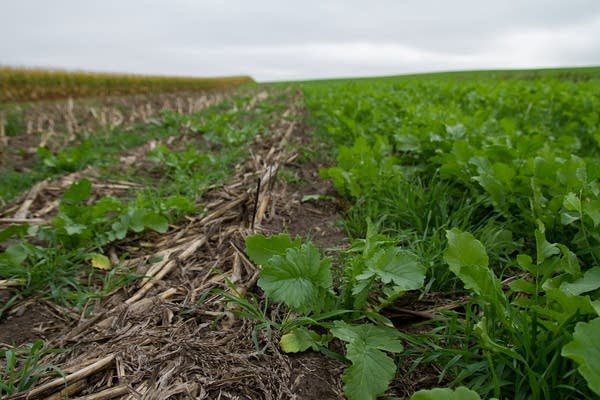Study: Cover crops, trees key to fighting climate change

Cover crops like these radish plants can help the ground store carbon and improve soil health.
Yi-Chin Lee | MPR News file
Go Deeper.
Create an account or log in to save stories.
Like this?
Thanks for liking this story! We have added it to a list of your favorite stories.


